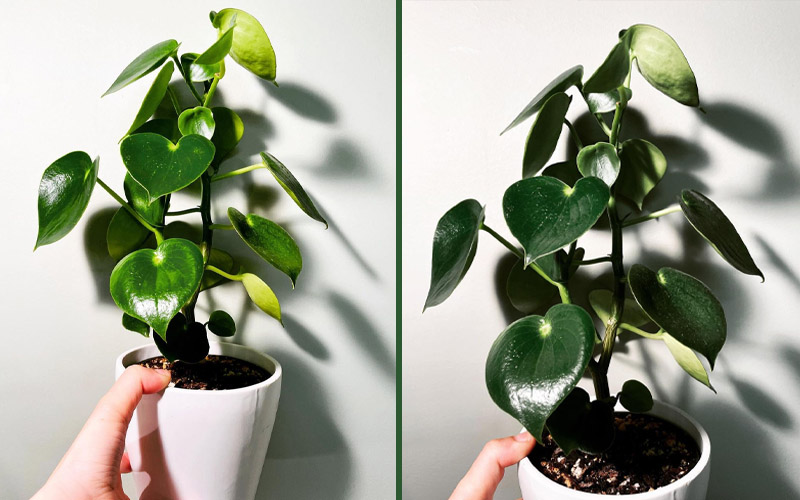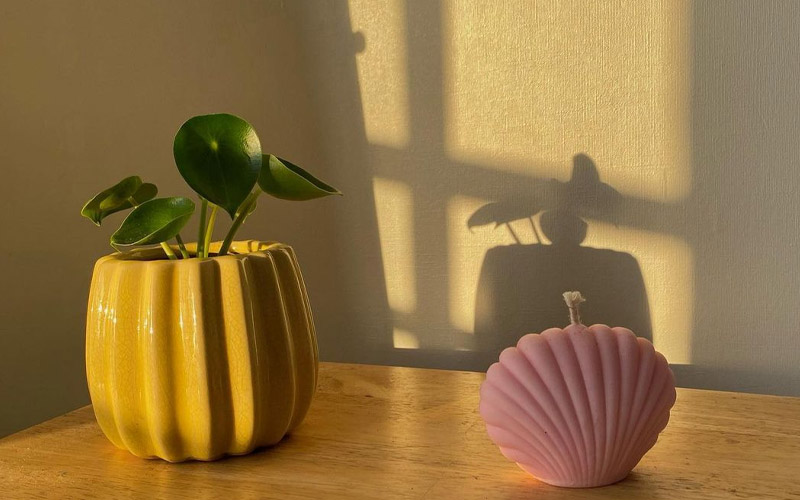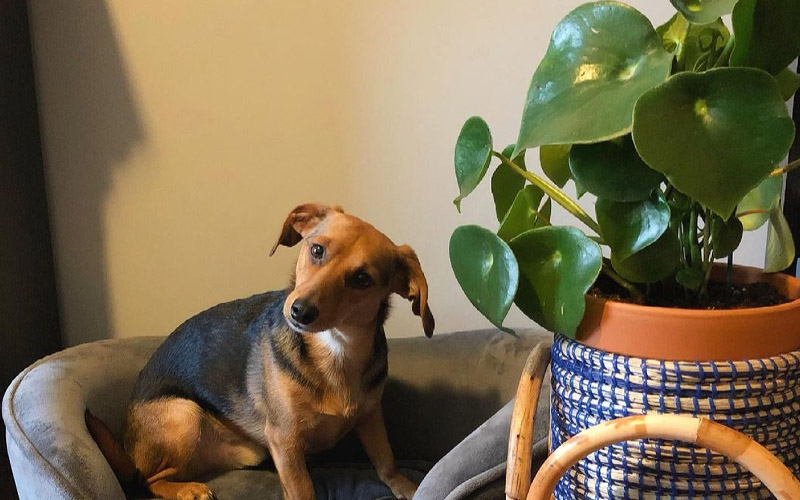Beautiful plants not only enhance the overall cozy and refreshing feel of a place but it also talks about the aesthetic taste of the owner.
However, when it comes to selecting a plant for home it gets tricky as need some extremely showy, beautiful yet lazy plants that need least care.
For your ease, one such beautiful plant we have here is Peperomia polybotrya.
This blog will discuss everything you need to know about what is coin peperomia, how to take good care of it, is it toxic and its comparison with other plants peperomia polybotrya vs pilea.
So, without wasting a second let’s start:
Table of Contents
Peperomia polybotrya:

What is Peperomia polybotrya?
Peperomia raindrop or polybotrya is a delightful houseplant known for its heart-shaped, thick, juicy leaves in glossy green appearance.
It gets so well to fill the in the small corners of home and place on the tables and despite being small, this ornamental plant is so showy and extremely hard to ignore. Let’s go to complete polybotrya scientific profile.
Peperomia polybotrya necessary information:
| Famous names | raindrop peperomia, Coin-leaf plant |
| Genus | Peperomia |
| Family | Piperaceae |
| Native to | Colombia and Peru |
| Size | can grow up to 18 inches tall |
| Similar to | Pila peperomioides |
| Growing Season | summers |
| Care | Very easy |
| Famous for | glossy green, thick, 4 inches long leaves |
Interesting Yet Must-Known Facts About Peperomia Polybotrya:
These are some facts about Peperomia raindrop polybotrya you should know before buying, growing, or taking good care of this plant.
- Not a Pilea peperomioides or Chinese money plant
- Can survive indoor and outdoor both places.
- Not jade plant or lucky plant. The lucky plant is Crassula ovata.
- Have fairly similar leaves to ‘Jayde plant or Chinese money plant
- Very show and catches the eye of others even from between the big plants
- Works well with small or bigger, all sort of places.
- Indoor and outdoor grown plant might differ in size but their leaves have similar glossy shine
Now you know enough about the plant facts, here you go with some comparison of your Peperomia polybotrya with other plants so you can identify it well, when it comes to other plant types.
Identify Peperomia Polybotrya:

Peperomia raindrop is known for its one feet long size and shiny green leaves that are oval in shape but from distance looks like a heart.
Leaves grow wider and becomes so easily noticeable making it one of the delightful additions in the houseplants.
Tip: If you need a plant with pure heart shaped leaves, try Ceropegia or string of hearts plant.
· Variegated Peperomia polybotrya
Sometimes, due to lack of some necessary nutrients, Peperomia raindrop shows extremely beautiful bleached leaves.
Bleached leaves means that foliage remains green from some part and becomes white from another part. This bleaching is known as Variegation in the plants.
The white and green leaves haver peperomias are referred to as variegated Peperomia polybotrya.
Let’s compare it to other plants to identify and understand coin-leaf plant better:
· Peperomia polybotrya vs pilea:
Pilea peperomioides and Peperomia polybotrya belongs to different families and have only one similarity and that is, glossiness in their leaves.
The main difference that you can use to easily differentiate peperomioides and polybotrya is the shape of the leaves.
The leaves of Pilea Peperomioides plant are round shaped while Peperomia Polybotrya leaves are oval shaped with tipping end that sometimes refer to being similar to the heart.
Also, Peperomia polybotrya is not Chinese money plant, the Chinese money plant is Pilea peperomioides. Click the link to read in-depth info on money plant.
· Peperomia polybotrya ‘jayde:
Well, jayde or jade plant is not peperomia but belongs to a different genus, different family, and different place.
Jade plant is actually Crassula ovata called as lucky plant, money plant or money tree. It belongs to Zimbabwe but grown worldwide as a house plant.
As Crassula ovata or jayde plant is Zimbabwean money plant while pilea is Chinese money plant so the similarity between the names might have confused some users and they started referring to polybotrya as jayde plant.
However, there are no similarities between the size or leaves appearance etc.
Once you are sure and easy to identify Peperomia polybotrya, it is time to start taking care of it.
Peperomia Polybotrya Care:

Looking after your polybotrya is effortless and it thrives so well with least care, however only if you know some simple rules of thumb.
What are those easiest tips that can get your indoor or outdoor polybotrya plant thrive well, we have discussed ahead.
Remember:
- They need some part of morning sunshine
- They need indirect sunlight
- They need very less water only when you find the soil dry
- They don’t need repotting
- They don’t need pruning
- And they don’t need much attention yet thrive so well
Let’s dig into the details:
1. The perfect Placement:

First thing first, you will have to find out a perfect position to keep your plant at home.
For indoor:
A room that receives enough sunlight during the day can be a perfect room for your peperomia polybotrya.
In this room, select west facing window that do receives lighting but not exact sunshine.
Don’t have a room that receives sunlight? Don’t worry! Artificial light can do the same for you polybotrya plant.
For outdoor:
As the plant loves indirect sunlight so place your polybotrya under the shade of big plants that the sunrays don’t reach directly to your plant.
In short, for both indoor and outdoor placement, providing indirect sunlight is the key or thumb rule.
2. Maintaining Temperature:
Usually, all peperomia types love to thrive in summer temperature and do not tolerate colder temperatures. Same is the case here.
Your polybotrya plant will need high temperature but not that scorching sun burn both indoor and outdoor.
In winters, you will have to be a little more sensitive about the outdoor grown or place peperomia polybotrya plant because they cannot do well when it is cold outside.
3. Sustaining Humidity:
All succulents are humidity lovers so is your peperomia raindrop plant.
Peperomia polybotrya will need enough humidity to thrive and strive well. If you don’t live in dry surroundings, the normal room level humidity will ne sufficient.
Humidity also keeps mealy bugs and house insects away from your plant.
4. Taking Care of Watering:
All succulents have thick leaves where they save or store water that they keep using for next many days.
Therefore, you don’t need to water your peperomia polybotrya plant every day. Check the soil if it looks dry from the outer part you can mist it with some water.
You can also perform knuckle test. For this insert your finger in the soil of your plant pot and if it comes out half dry your plant needs immediate watering.
Underwatering and overwatering are both harmful for your plant, this thing we will discuss in the lines coming ahead about taking precautions when doing peperomia coin-leaf plant care.
5. The soil:
As we said peperomia polybotrya is an effortless to care species or variety of plant so the soil you may have change after 2 to 3 years of owning this plant.
It takes less nutrients from the soil because its roots do not go so deep in the soil. However, after three years, soil will lose its nutrients and become compact.
The soil you should select can be made at home using 50% perlite and 50% peat moss mixture.
6. Fertilizers:
For fertilizer you will need all-purpose fertilizers. The plant will need such nutrients more during growing season that’s of course summer but less in the winters.
7. Repotting:
This will be the most crucial thing during whole peperomia polybotrya care process but good news is, you will have only once in three weeks.
Repotting is tricky because of the sensitive roots of your plant. As said earlier, roots of polybotrya don’t go so in, in the soil.
Hence a little bit of carelessness might harm your plant to much even till death. Therefore, always be careful when repotting peperomia polybotrya.
Also, select summer or growing season when it comes to repotting your plant so that it can adjust faster with the new environment.
Besides this, the pot shouldn’t be so big because your polybotrya plant is not growing anytime soon.
Peperomia polybotrya propagation:
Peperomia raindrop Propagation is an effortless thing to do because it doesn’t need a very deep rooting system to grow.
There are two ways that you can use to propagate your polybotrya plant one is in the soil and the other in the water.
Here we are discussing both methods:
1. Peperomia polybotrya propagation in water:
It is easy to propagate peperomia polybotrya in water. You just need a fresh cutting of the plant with some leaves on it place it underwater and wait for some days for it to germinate.
Once you see the germination has started and tiny roots have appeared at the bottom of the plant cutting, sow it in the water.
After that take care of light, temperature, humidity, watering, and of course fertilizers. With regular care, you can easily propagate the plant as many times as you need.
2. Peperomia polybotrya propagation in soil:
You can also propagate peperomia polybotrya in the soil. For this, the way is almost same as its propagation in water.
You take fresh cutting and compost soil, sow the branch in it and follow the same routine of peperomia coin-leaf plant care.
It will be best if you dip the branch in the rooting hormone for fastest growth.
Peperomia polybotrya cat and dog toxicity:

All peperomia species and varieties are non-toxic to pets including polybotrya. However, they can cause allergies in cats and dogs to some extent.
It can happen if they accidently swallow some of the leaves of plant. If you can avoid this then our peperomia polybotrya is completely safe for pets.
Common Problems with Peperomia Polybotrya:
Overall polybotrya peperomia is a healthy plant with no respective diseases or issues. However, some house bugs might cause issues such as spider mites.
Besides this you may see wilted or burnt leaves of your plant but that would be due to wrong ways of taking care of it.
Here are we discussing some issues.
1. Peperomia polybotrya leaves curling:
Leave curling is a common issue that you tend to see in succulents let alone polybotrya. It happens because of lack of water.
Though the plant doesn’t need every day watering but there should be a routine in the on and off watering as well.
If you might have forgotten about giving water to your plant for many days, the leaves will start to curl up.
In this case, immediately mist your plant with fresh water and also pour some water in the pot and let it drain well and do not forget watering your peperomia polybotrya next time.
2. Scab-like protrusions on leaves:
This issue also occurs due to underwatering. When peperomia raindrop doesn’t get water for so long, it starts to get wilt and shows it via its leaves.
In this condition, you will have to trim off the damaged leaves, give enough water to your plant to drink and wait for it to get back to life.
You may also have to add certain nutrients in the water to get rid of the situation. For this, you will have to contact an expert botanist to get advice about quantity and type of the nutrient to add in water.
3. Brown leaves on peperomia polybotrya:
Brown leaves on your plant are because of the over exposure with heat. It is not easy for succulents to tolerate heat of direct sunlight.
These brown leaves are actually reason of over-exposure with the sun. To cure it, immediately change the position of your plant and place it under some indirect lighting source.
Also, you can trim off the harshly burnt leaves so that they don’t take necessary nutrients that healthy leaves require.
Bottom Line:
This is all about peperomia polybotrya. Are we missing anything? Please provide us your precious feedback.

